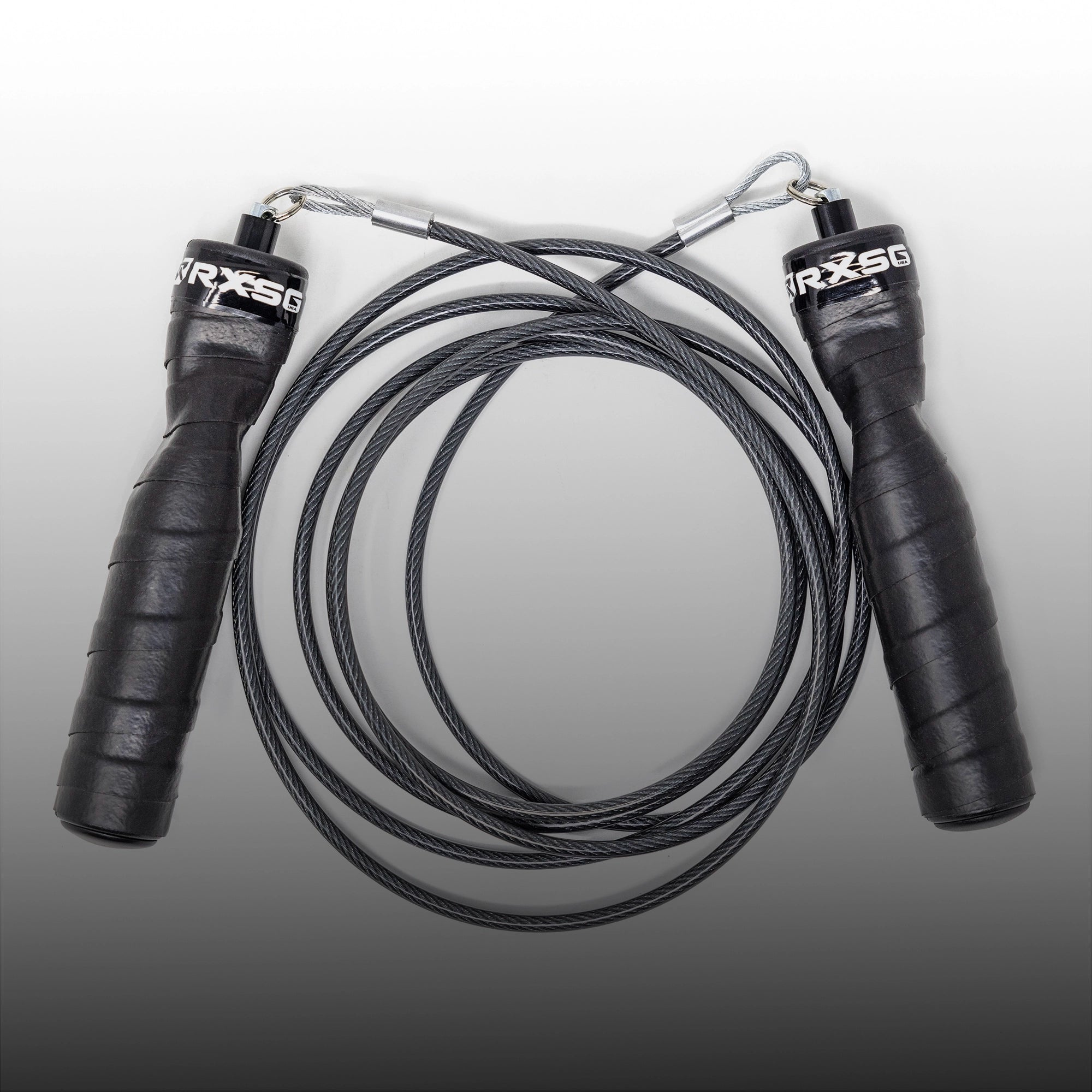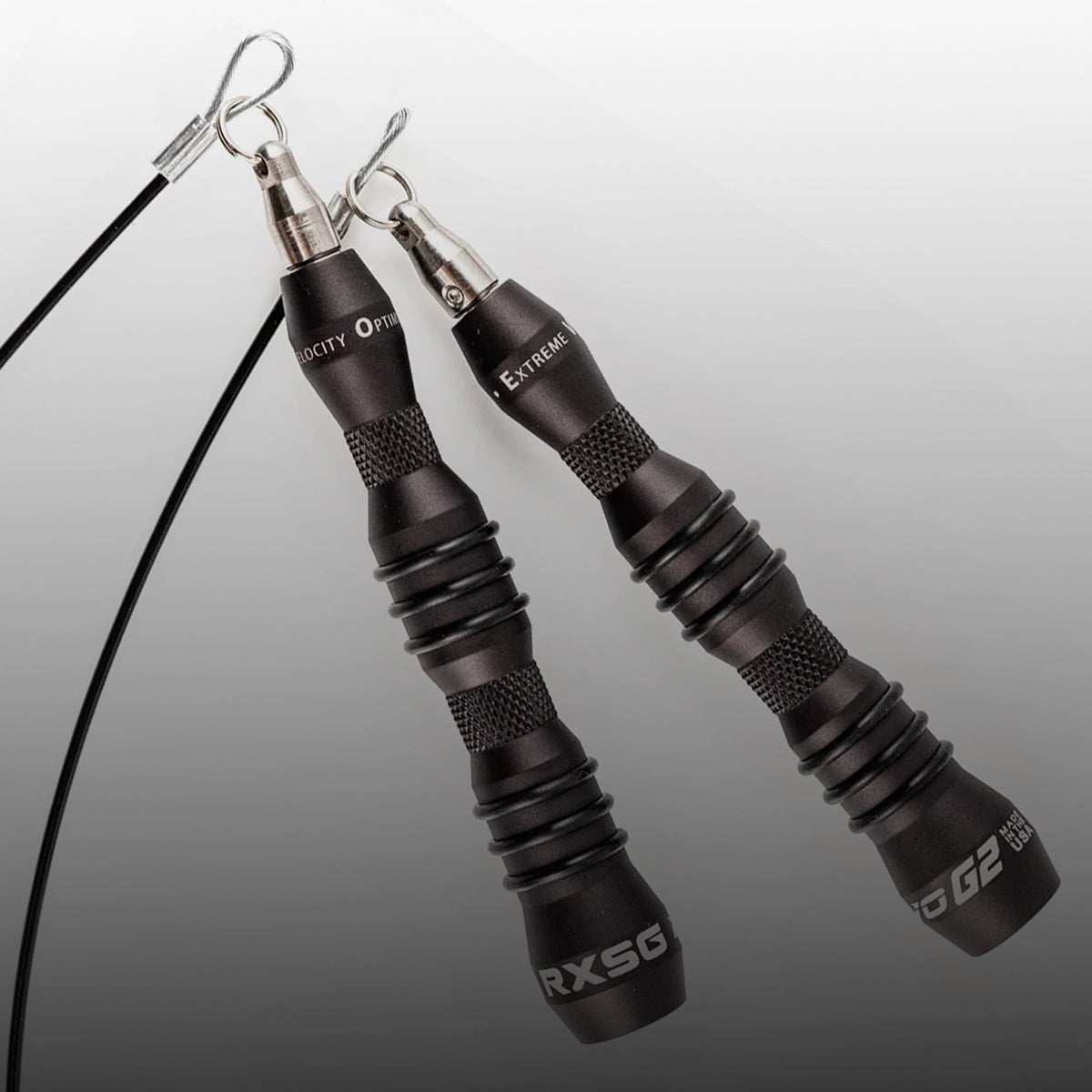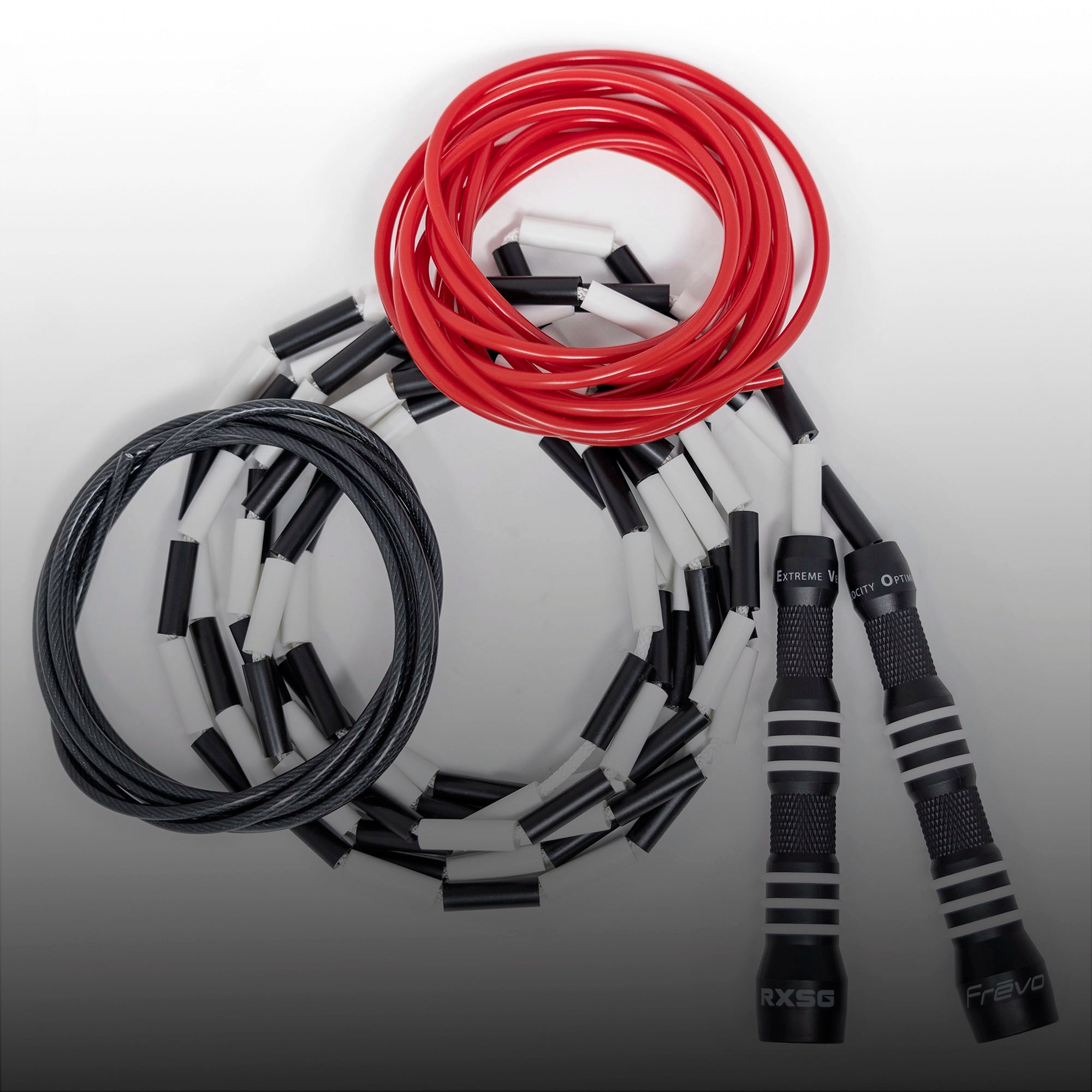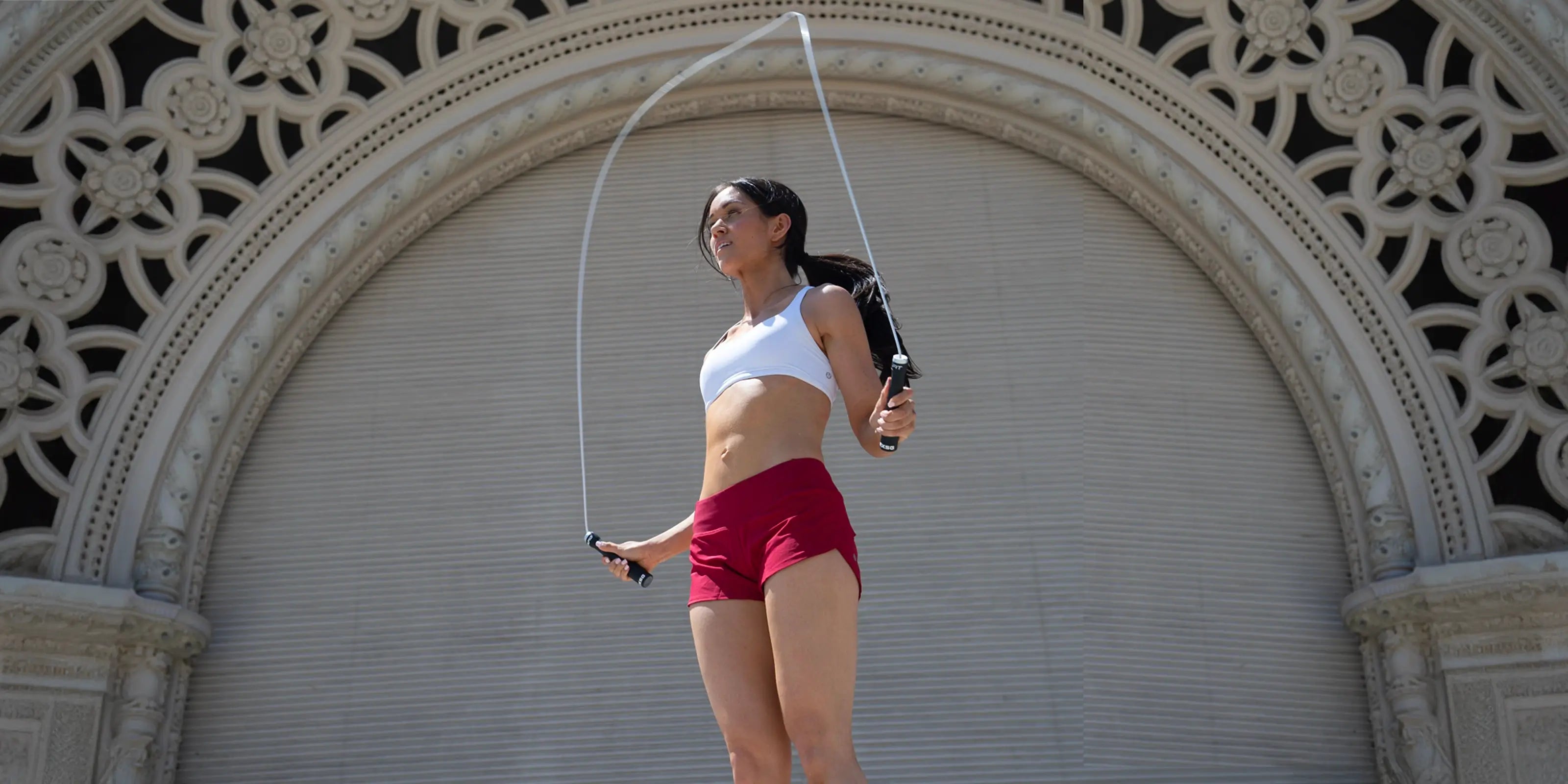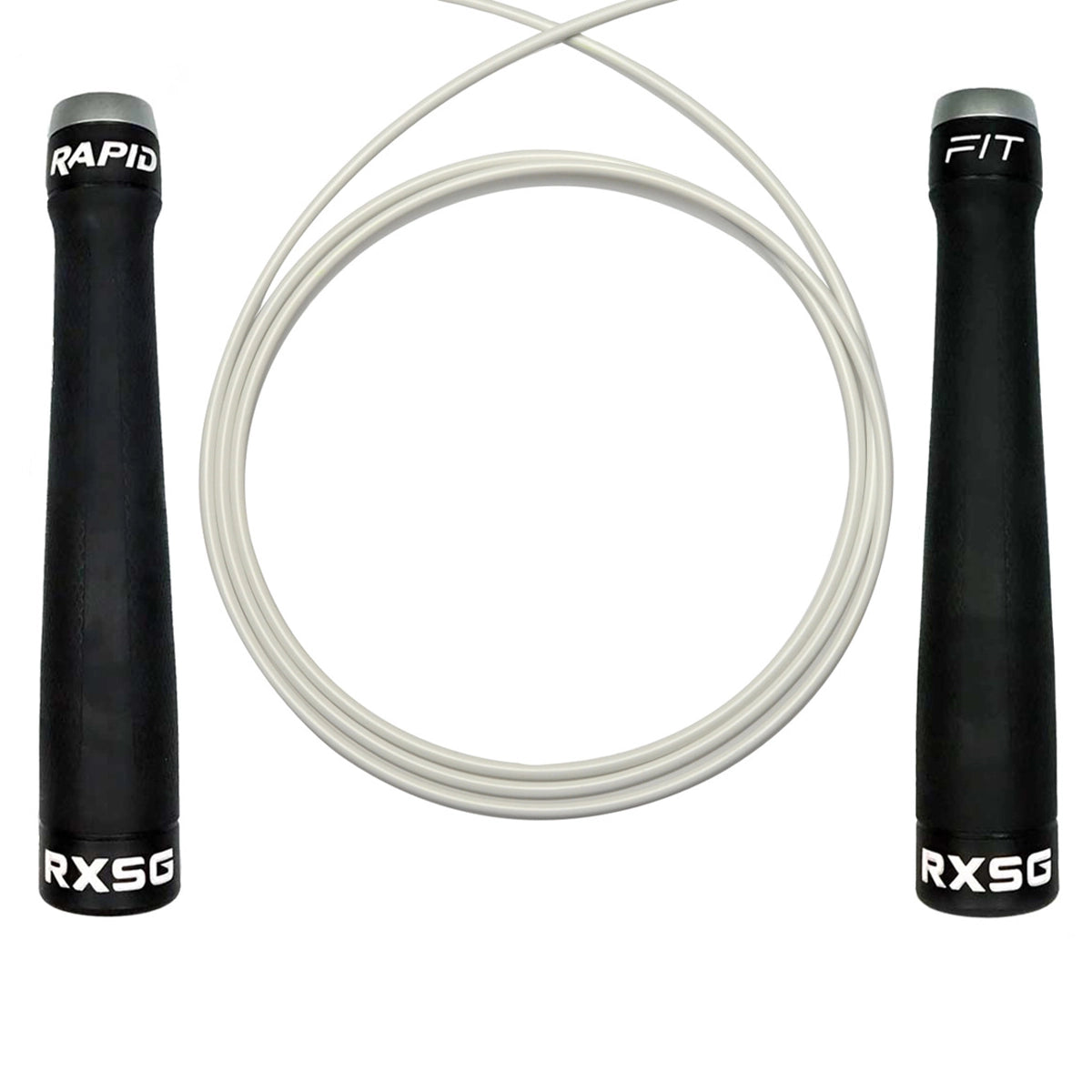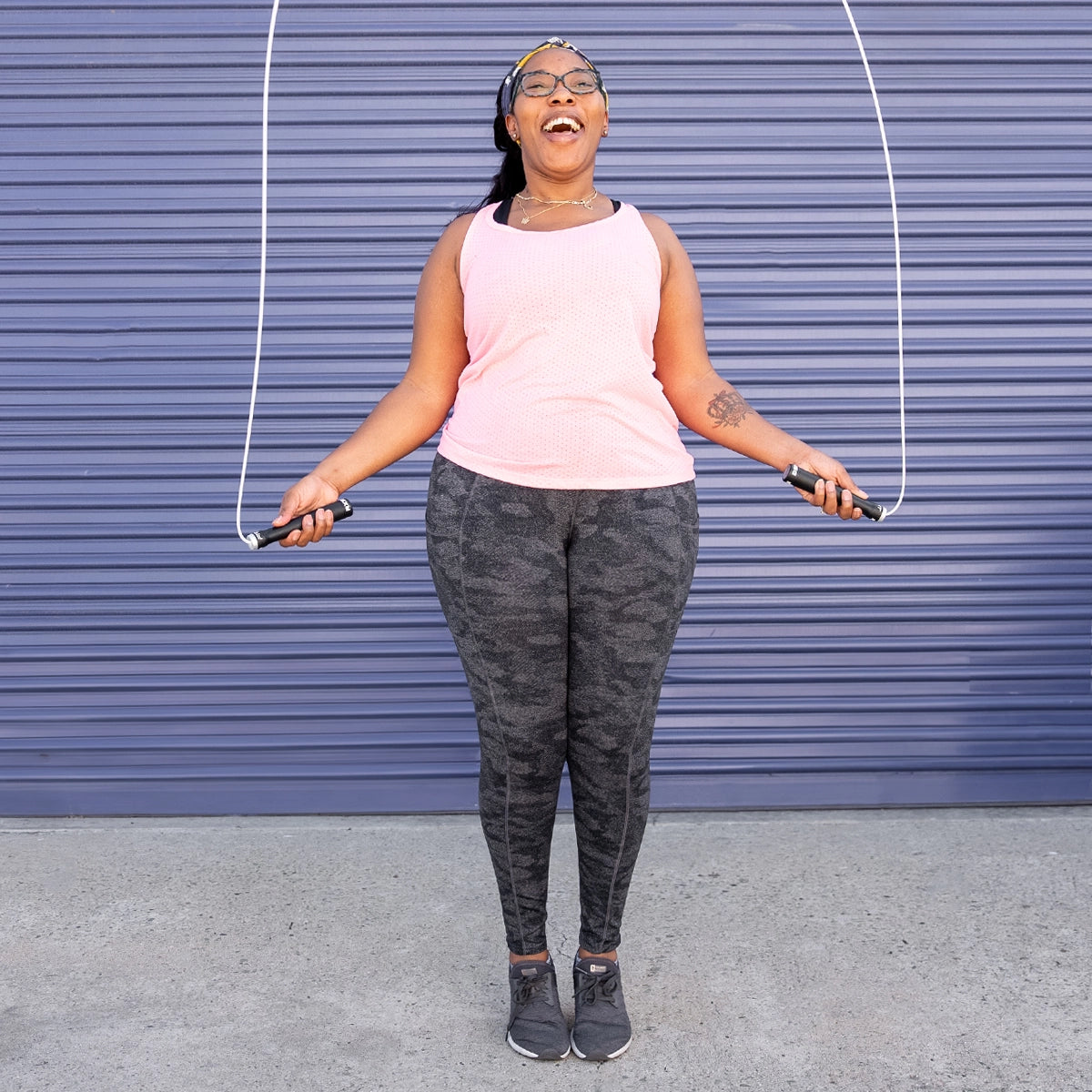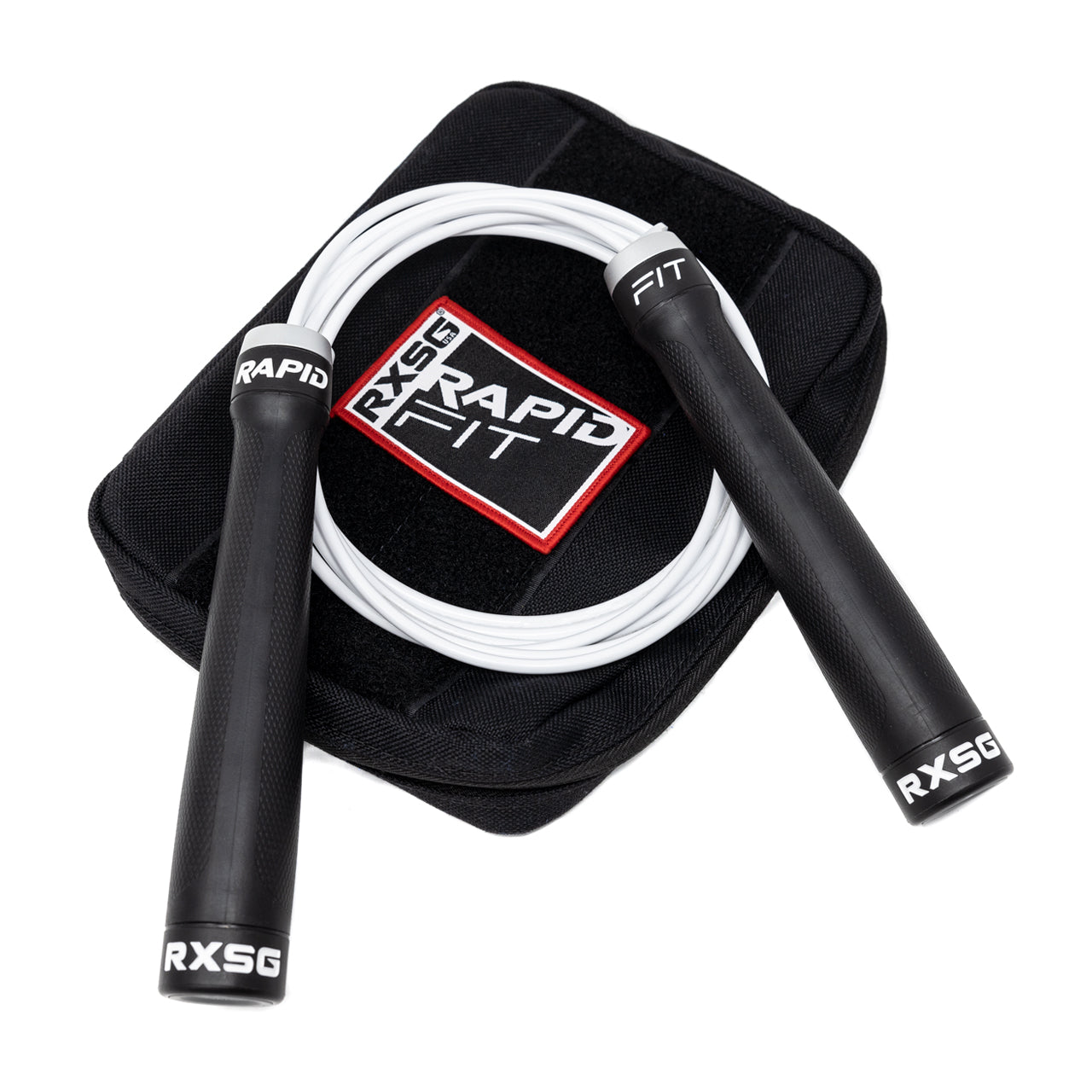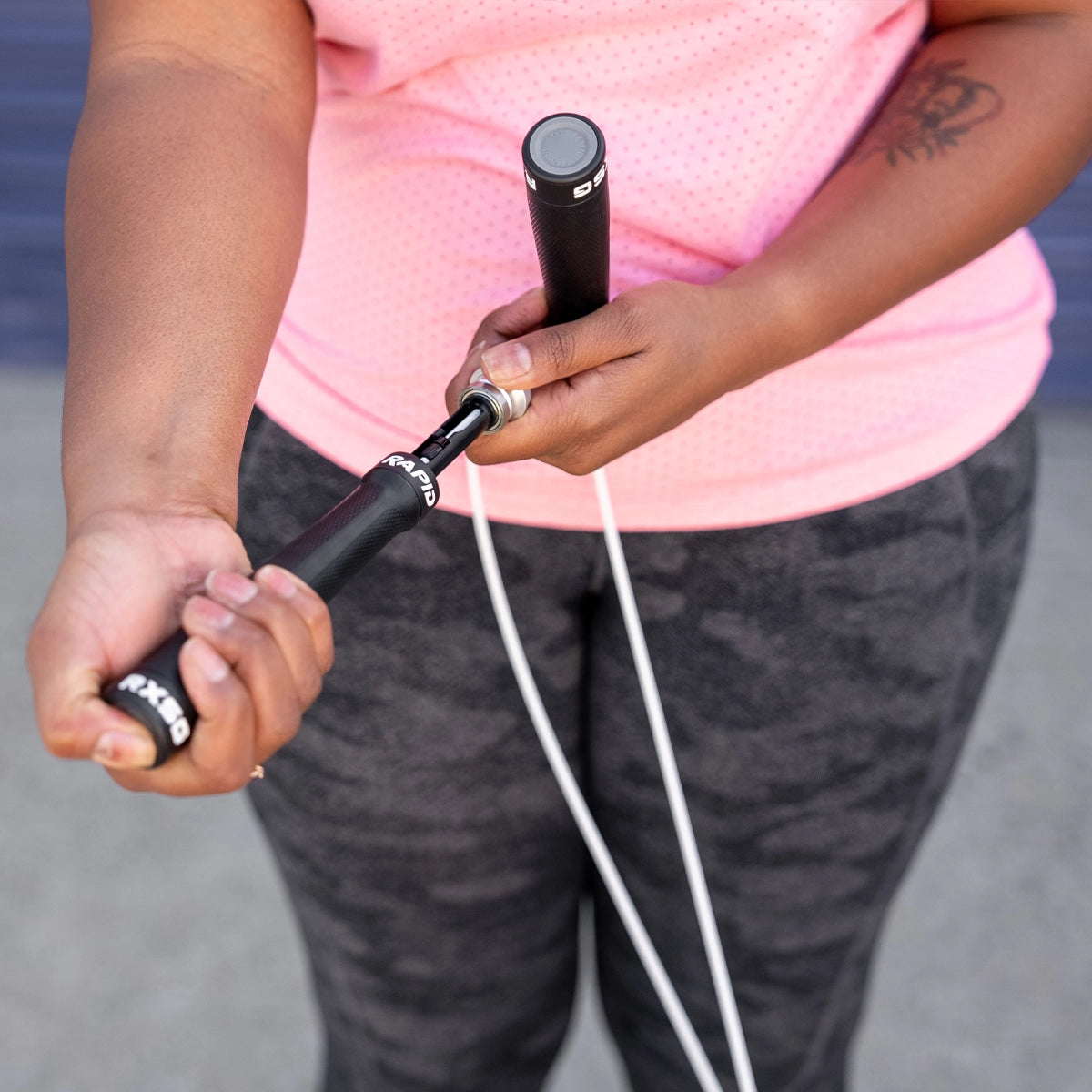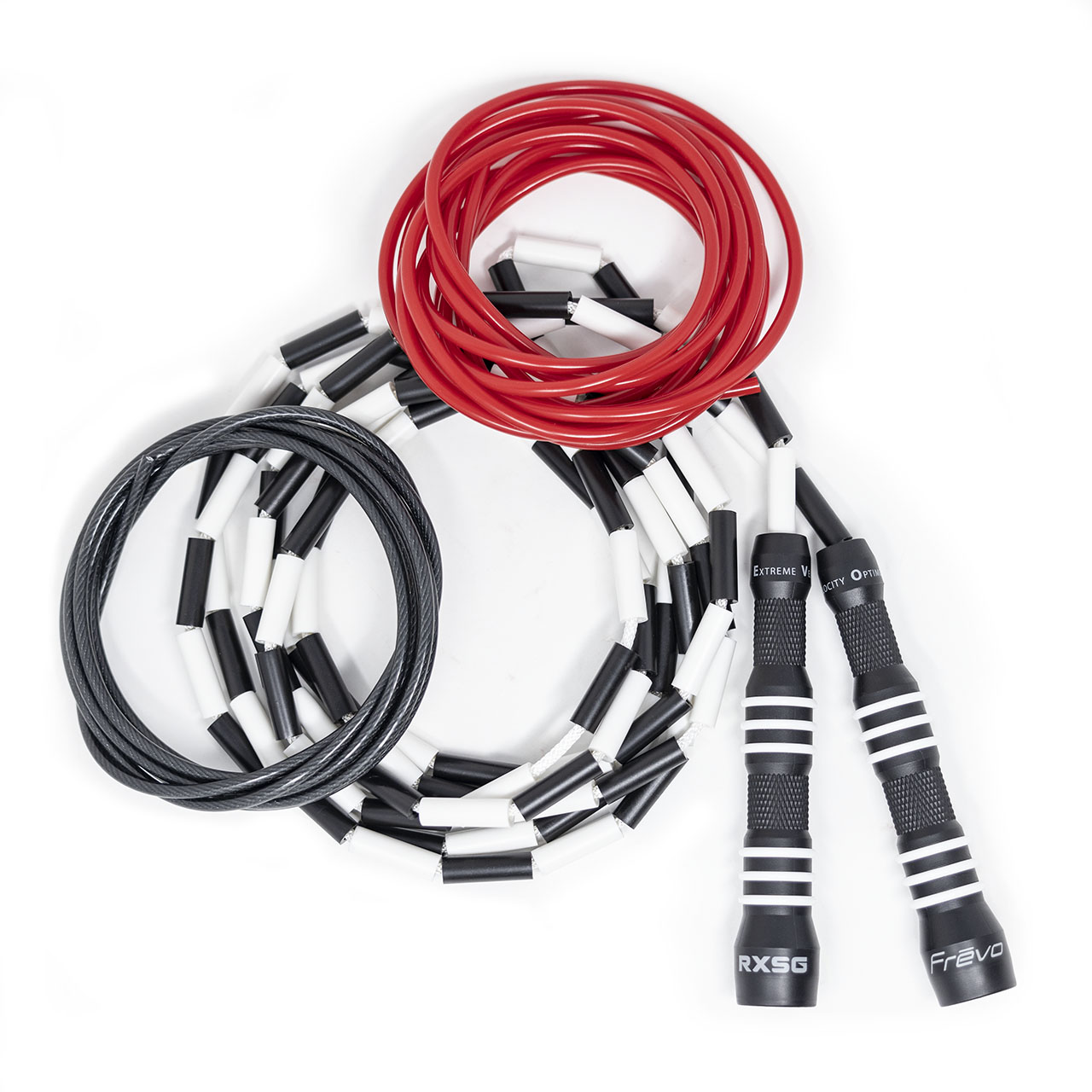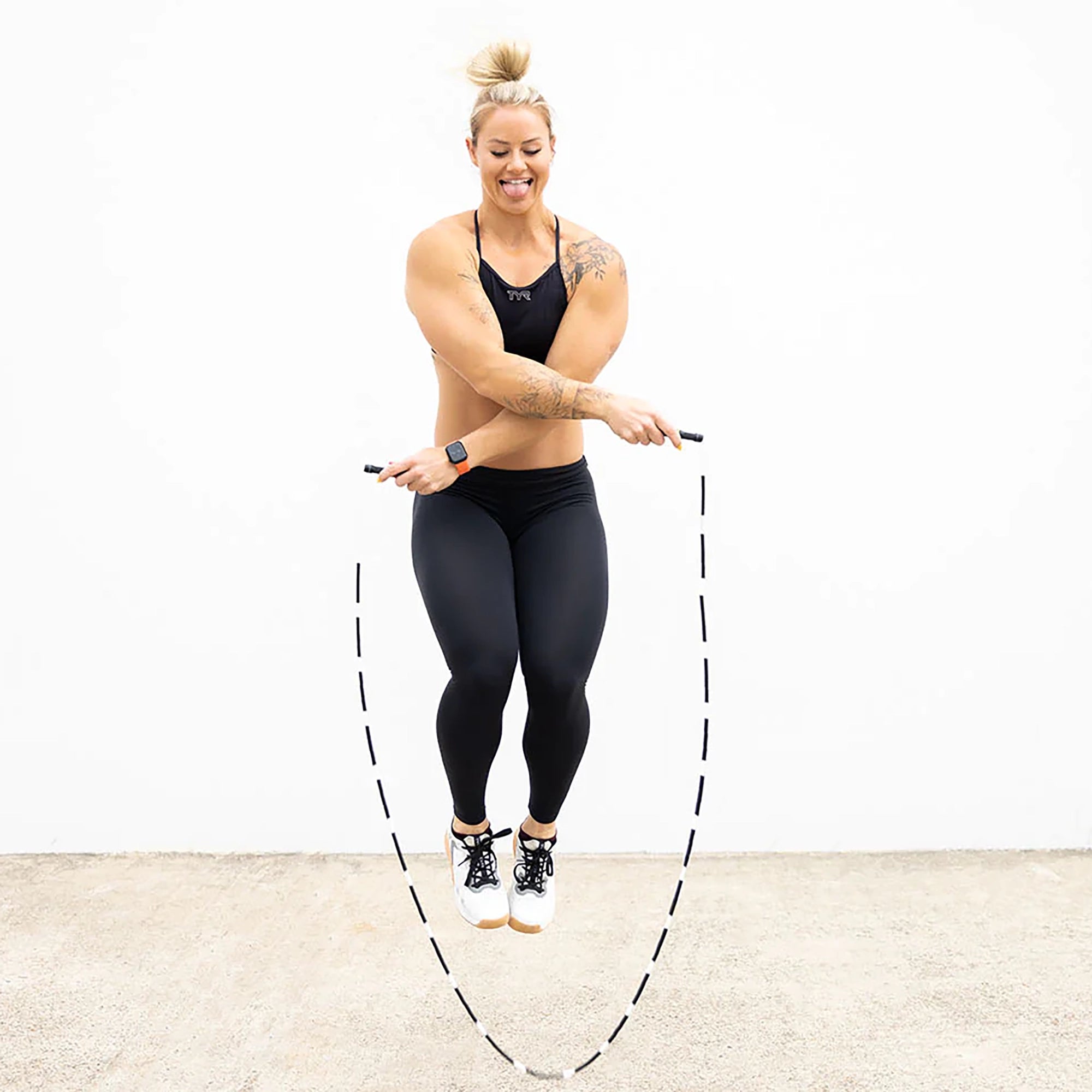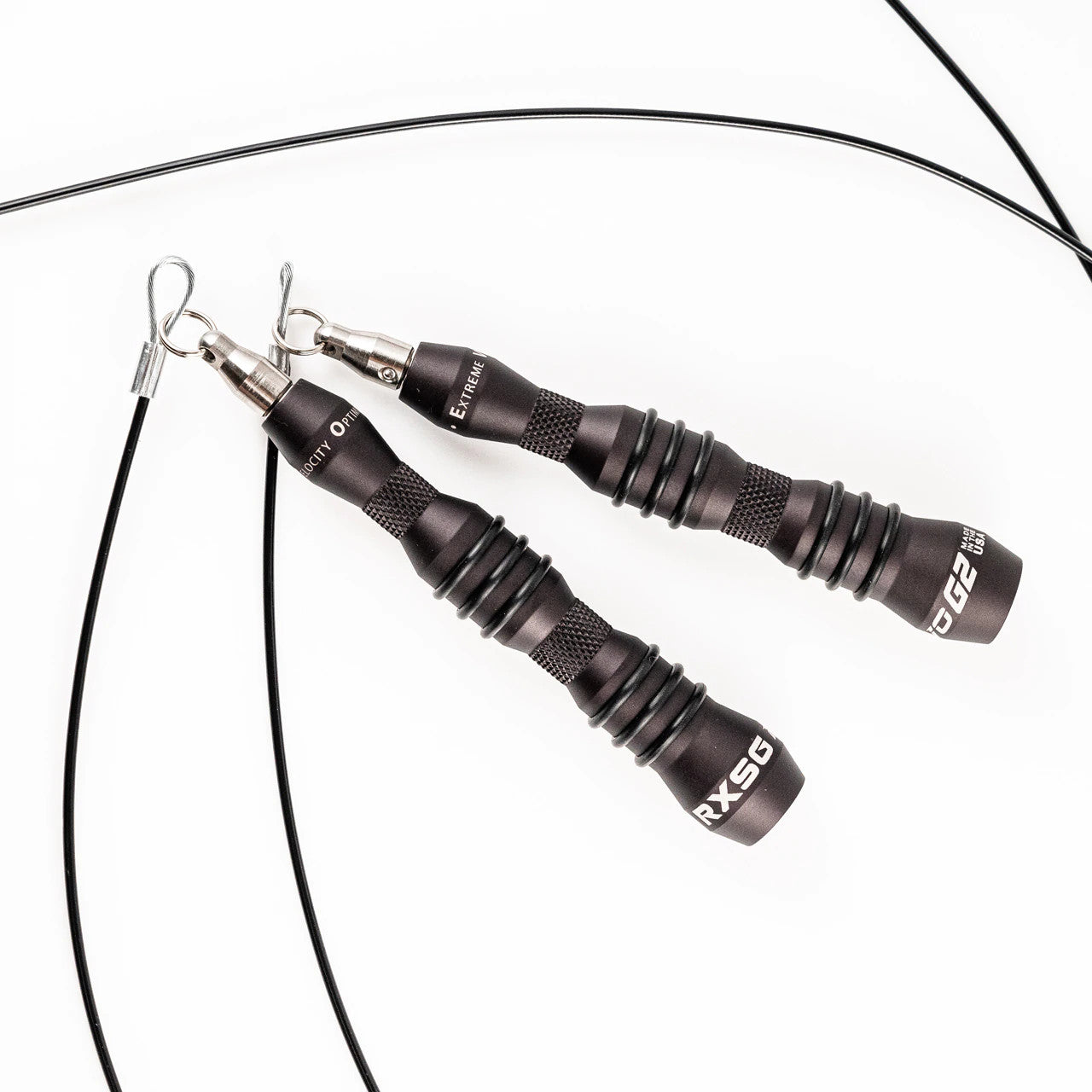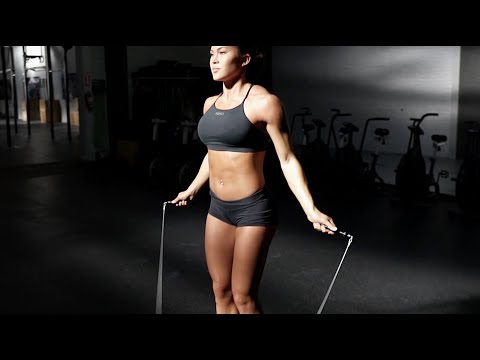Beloved by so many children because of how fun it is, jump rope is actually one of the most effective methods of cardio around.
If you’re craving a good cardio session, but you do not want to deal with all the running or all the punching while still building muscles, then jump rope is the way to go. It’s classic, fun, and it’s excellent for improving coordination. So, while these are usually seen as toys that kids would play with during recess, especially with accommodating chants, you can absolutely count on the workouts being intense with these.
On top of that, they’re pretty affordable too! But as a beginner, where do you even start? While jump rope may feel intimidating, this is one of the best ways to create this mind and body-connection that helps out with improving balance. So, here’s an extensive jump rope guide filled with jump rope workouts and jump rope tutorials that will instantly set you up for your journey!
Why is Jump Rope the Perfect Exercise for Beginners?
Are you looking for a fun way to boost your exercise regimen? Better yet, are you looking for a way to have fun while exercising?
Believe it or not,
this effective exercise tool, once considered a children’s toy, is now known and loved for giving anybody a good fitness challenge. When it comes to beginners exercising, it’s always good to start with the extreme basics. The gym is filled with a lot of heavy and challenging exercise tools; some are even confusing to use- even for gym rats! So when you’re starting out on the road to solid fitness, it’s going to help to go with tools that are easy and accessible, like a jump rope!
Jump rope is also a great option for beginners
because it can be easily modified to suit different fitness levels. Whether you are just starting out or looking for a more challenging workout, there are various techniques and routines that you can incorporate into your jump rope exercise. Plus, when you’re starting out, especially cardio, it’s better to start small rather than something major and tiring like running.
Plus, your muscles won’t ache nearly as much. But when it comes to the fitness journey, it’s also about building up coordination and agility, not just muscles and stamina. Honestly, jump rope is one of the very few exercises that keep the mind and body connected, so you’re not going to be drifting off into space while working out with this!
What are the Best Jump Rope Exercises for a Beginner To Do?
As a beginner, it’s best that you don’t start out with just any exercises, you need to start slow and then work your way up. Even when it comes to jump rope, there are different movements and coordinations that are involved. So it’s best to begin slowly. Fortunately, we not only have some of the right moves to start off with, but we even provided some tutorials for you so you can get started on the right foot!
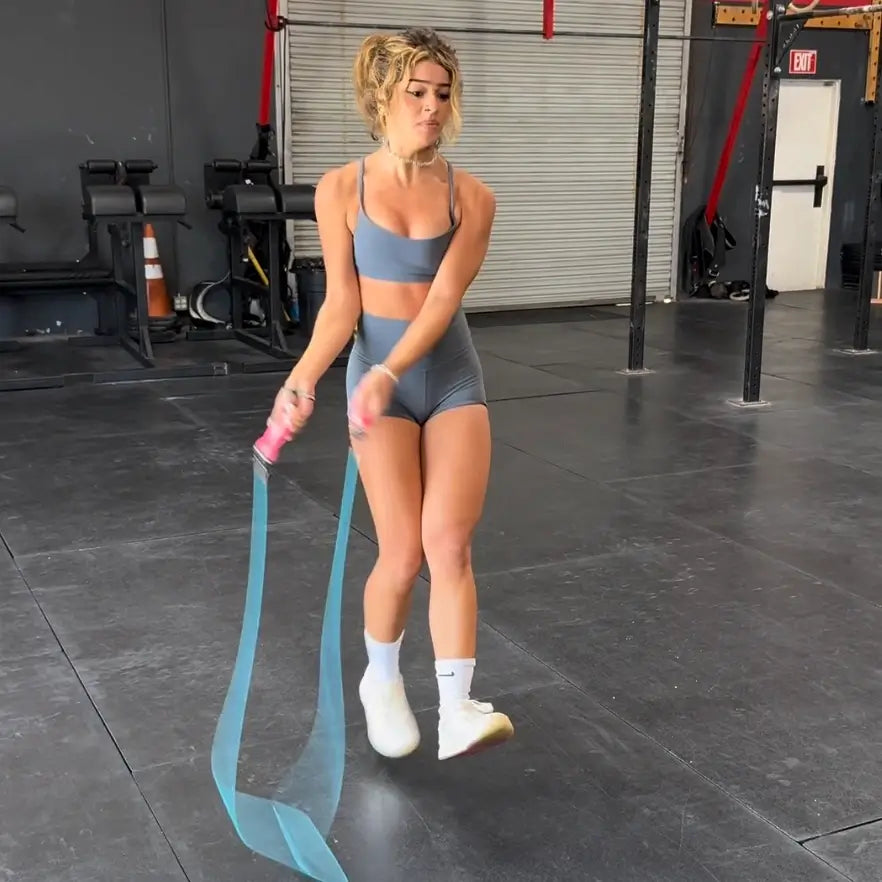
Side Swings
The Side Swings not only look great, but they’re super effective too! To make your jumps more effective, try a Side Swipe, an upper-body focused movement that requires you to spread your legs out. The move will also challenge your balance and coordination. The trick is to anticipate where the rope is heading and hit it in the air with the correct timing. It takes time to get it just right, but with practice, you’ll be doing it flawlessly!

Criss-Cross
This simple jump rope exercise can be performed at the end of a strength-training session or as a stand-alone cardio workout on your next gym day. Stand with your feet together, knees and hips slightly bent, and grab a handle in each hand. Swing the rope so it moves behind you and around your head. As the rope nears your feet, lift your right foot into the air while hopping down with your left. Repeat with every turn of the rope. This classic exercise is often used by boxers to develop endurance and polish coordination.
Start with alternating on both feet for 10 skips, then switch to your right leg for another 10, and then alternate back to both sides again for 10 each. Sure, the Alternate Foot Jump is slightly on the more experience side, but when you’re a beginner and you’re trying to move on up, this is something you should definitely try!
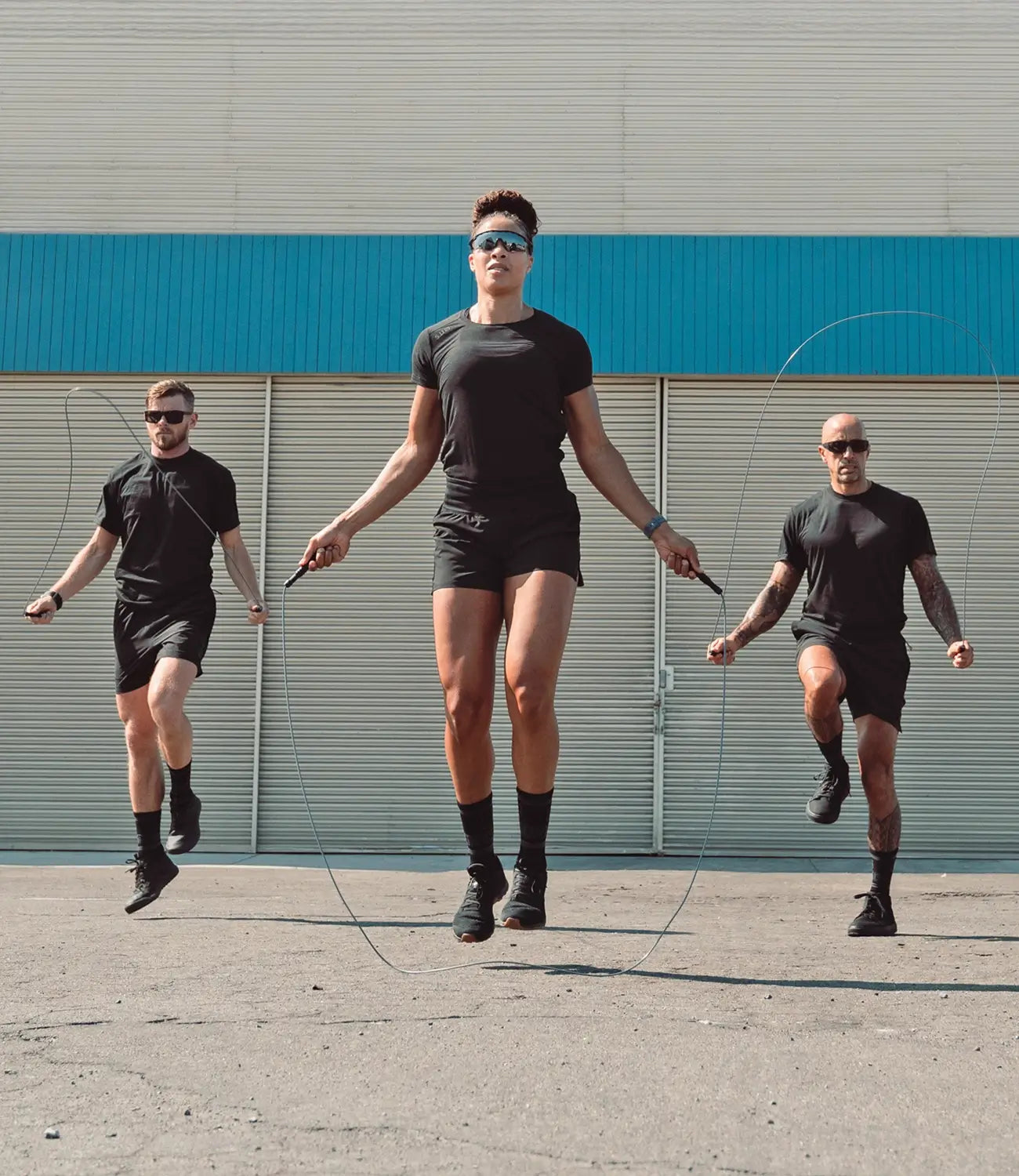
Run-In-Place
After you got the first two figured out, and you’re coordination is stronger, then you can move onto the next one! This is on the trickier side, but it’s a great way to put your mind and body to the test! When it comes to the Run-in-Place,you’ll need to be staying light on your feet (on the balls of your feet and your toes), rotate the rope over your head, then step under it with one foot, then up onto it with the other. As a bonus, you can also throw in Criss-Cross in as well. This is also a great way to test out your rope length, which should be just long enough so the handles reach your armpits. With this one, you 100% NEED to have a jump rope that accommodates with your height.
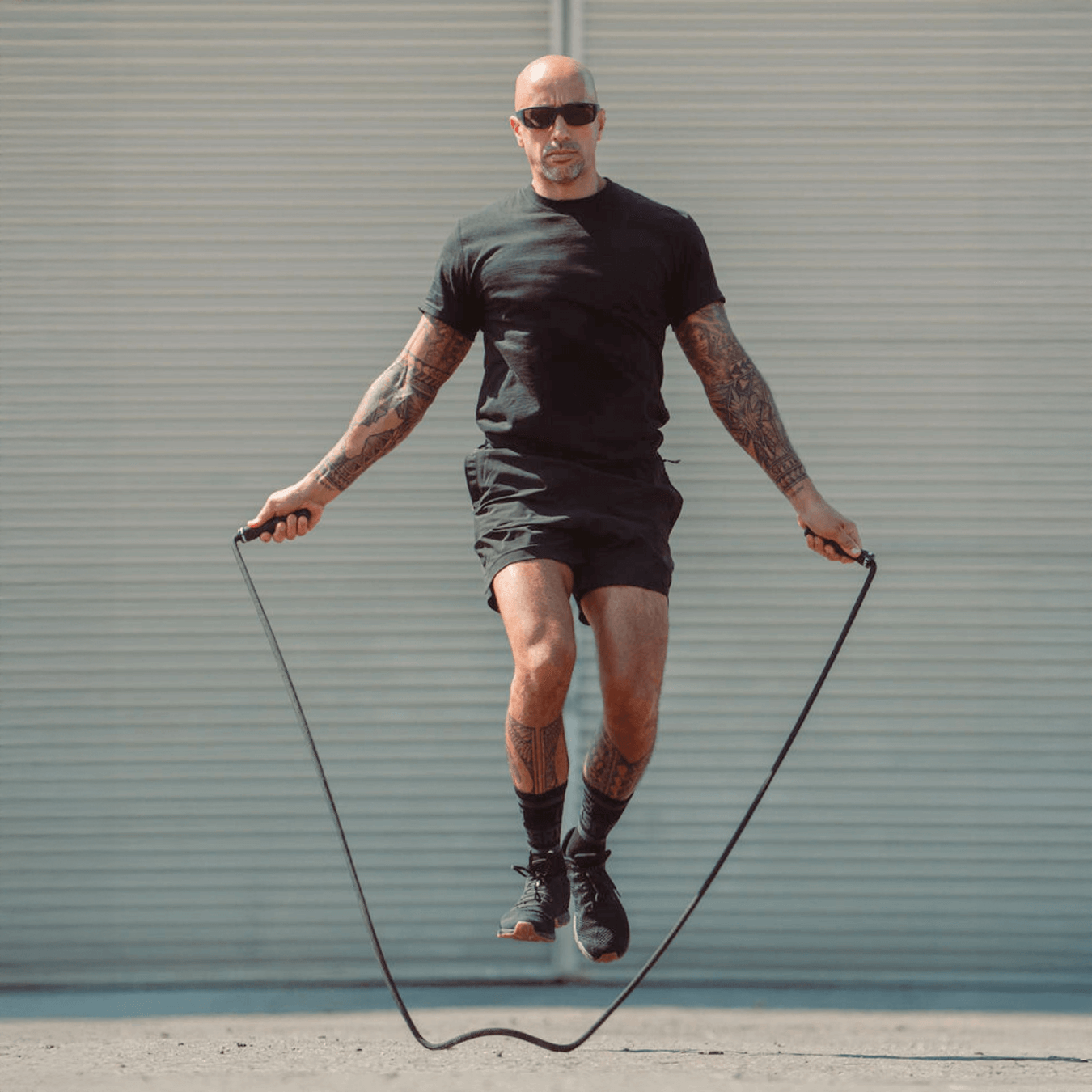
Alternate Foot Jump
This simple jump rope exercise can be performed at the end of a strength-training session or as a stand-alone cardio workout on your next gym day. Stand with your feet together, knees and hips slightly bent, and grab a handle in each hand. Swing the rope so it moves behind you and around your head. As the rope nears your feet, lift your right foot into the air while hopping down with your left. Repeat with every turn of the rope. This classic exercise is often used by boxers to develop endurance and polish coordination.
Start with alternating on both feet for 10 skips, then switch to your right leg for another 10, and then alternate back to both sides again for 10 each. Sure, the Alternate Foot Jump is slightly on the more experience side, but when you’re a beginner and you’re trying to move on up, this is something you should definitely try!
Single-Leg Jumps
Last, but far from least, you’re going to have one of the toughest movements to do, the Single-Leg Jumps! This is no cake walk, and it’s not necessary as a beginner or expert, but it can be a way to push yourself when you’ve gotten really good with jumping coordination. The ability to jump high off one leg is a desirable trait for athletes, especially in sports such as basketball or football.
However, jumping up high off one leg requires more than just explosive power; it also involves having very strong quad and knee extensor muscles to control the deceleration of the shin in landing. Performing single-leg jumps is a great way to develop both the power and stability of these muscles. This exercise can be added to the beginning of your workout as a power drill, or you can even use it in combination with other plyometrics to increase your overall vertical jump.
To perform this exercise, simply stand with your feet shoulder-width apart and bend your right knee. Then, jump rope with your left foot. Repeat for the designated number of repetitions. It is recommended to start off slow and then gradually increase the duration of each jump as you get more comfortable with this movement.
Incorporating Jump Rope Into Your Fitness Routine: How Often Should You Do it?
One of the beauties of this form of exercise is the fact that you don’t need any fancy equipment, and you don’t even need a gym membership either. It's low-impact and can be done almost anywhere, making it an ideal addition to any fitness routine. Should you only use jump rope for exercise? Ideally, no, but this is a great form of exercise to just incorporate into your daily routine.
It doesn’t necessarily target all the muscles, so adding it to an effective full-body routine is going to be the perfect setup. The frequency of jumping rope depends on various factors such as your fitness level, goals, and overall health. Plus, you need to keep in mind that you shouldn’t overwork your joints, either. If you’re completely new to this form of impact cardio, then it’s best to start out once or twice a week for a few minutes and slowly work your way up to every other day for 10 to 15 minutes (or more if you become advanced).

How Do You Cool Down and Recover After a Jump Rope Workout?
Like any other workout, including cardio, you’re going to need to cool down and give your muscles a chance to recover. Even when it comes to jumping rope, no matter how fast you did it, the intensity, or where you were doing it, you’re still going to need to rest. One effective way is to perform some low-intensity exercises such as walking or jogging for 5-10 minutes. This will help bring your heart rate back down gradually and prevent blood from pooling in your legs. Stretching is also an important component of cooling down after a workout. Focus on stretching the muscles that you used during the jump rope session, such as your calves, hamstrings, and quadriceps. Hold each stretch for 15-30 seconds and repeat 2-3 times.
In addition to cooling down, proper recovery is essential for optimal performance in future workouts. Make sure to hydrate with water or an electrolyte drink, eat a balanced meal with protein and carbohydrates within an hour of finishing your workout, and get enough restorative sleep. By incorporating these practices into your post-jump rope routine, you can ensure that you are taking care of your body and maximizing the benefits of your workout. Even if you think you don’t need it or even if you feel fine, you’re still going to need it. So many beginners make this massive mistake, and then they feel extremely sore the next day. You do not want to do this to yourself.
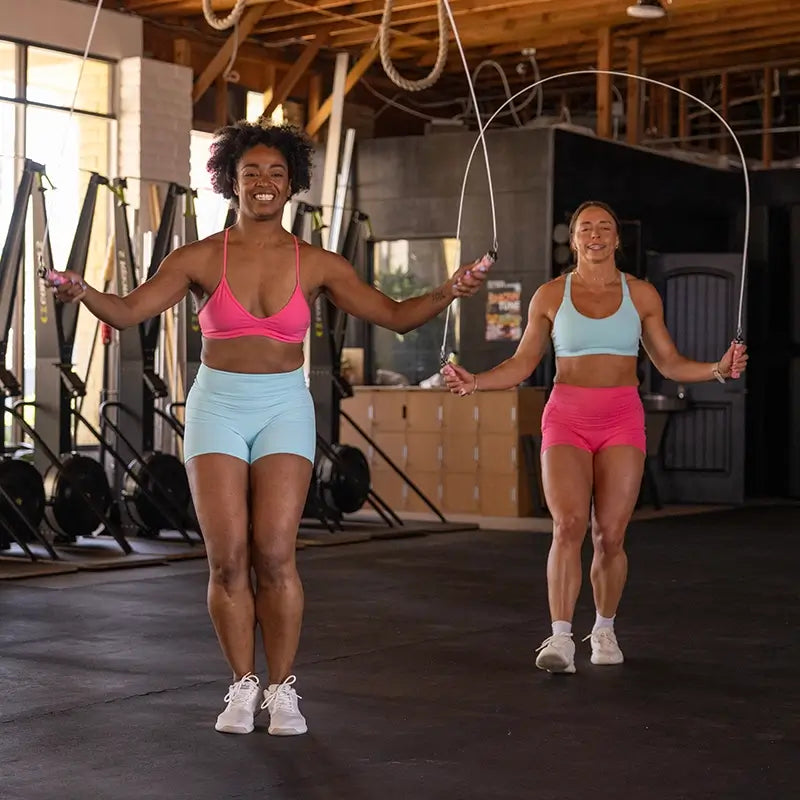
Jump rope is a great exercise that can help you improve your cardiovascular health, burn calories, and enhance your coordination. However, like any other form of exercise, it's important to do it correctly to avoid injuries and get the most out of your workout. So let's look into some common mistakes that people make when exercising with a jump rope and how to avoid them.
- Not Using the Right Size of Jump Rope
Believe it or not, you’re going to need to coordinate based on your height. A rope that is too long or too short can make it difficult to maintain proper form and rhythm. It's important to choose a rope that is the right length for your height. One found in the toy section of a local toy store is most likely not going to suffice, and instead, you should opt for a high-quality one that can be used during your workout sessions.
- Jump Too High or Too Hard
This can put unnecessary strain on your joints and increase your risk of injury. Instead, focus on jumping low and using quick, controlled movements. You can even work out on a AIR Jumping Mat as this will be much easier on your joints.
- Skipping the Warm-Up
Last but far from least, you’re still going to need to warm up. Make sure to stretch your muscles and gradually increase intensity before starting any exercise routine. Like any other form of cardio, this isn’t any different and should be done with care.
Shop Top Sellers
Jump Rope is Perfect for any Exercise Beginner! Add It to your Fitness Routine Today!
Jump rope is one of the best cardio exercises out there; it’s fun and refreshing, and it works out muscles that even running simply can’t do. Overall, you can count on not only burning calories, improving coordination, and increasing endurance, but you’re opening yourself up to a pretty fun exercise. Even children who dislike exercise have fun with this, so you can absolutely count on it too!
When you’re starting out your exercise journey or even just want to get into a new form of cardio like this, all you really need to do is keep in mind that it can be a bit overwhelming at first, and that’s okay. It’s going to take a bit of time to get used to it, but in the end, this is by far one of the best exercises that any beginner to do, whether you love cardio or not! So get your jump rope, and start working out today!

